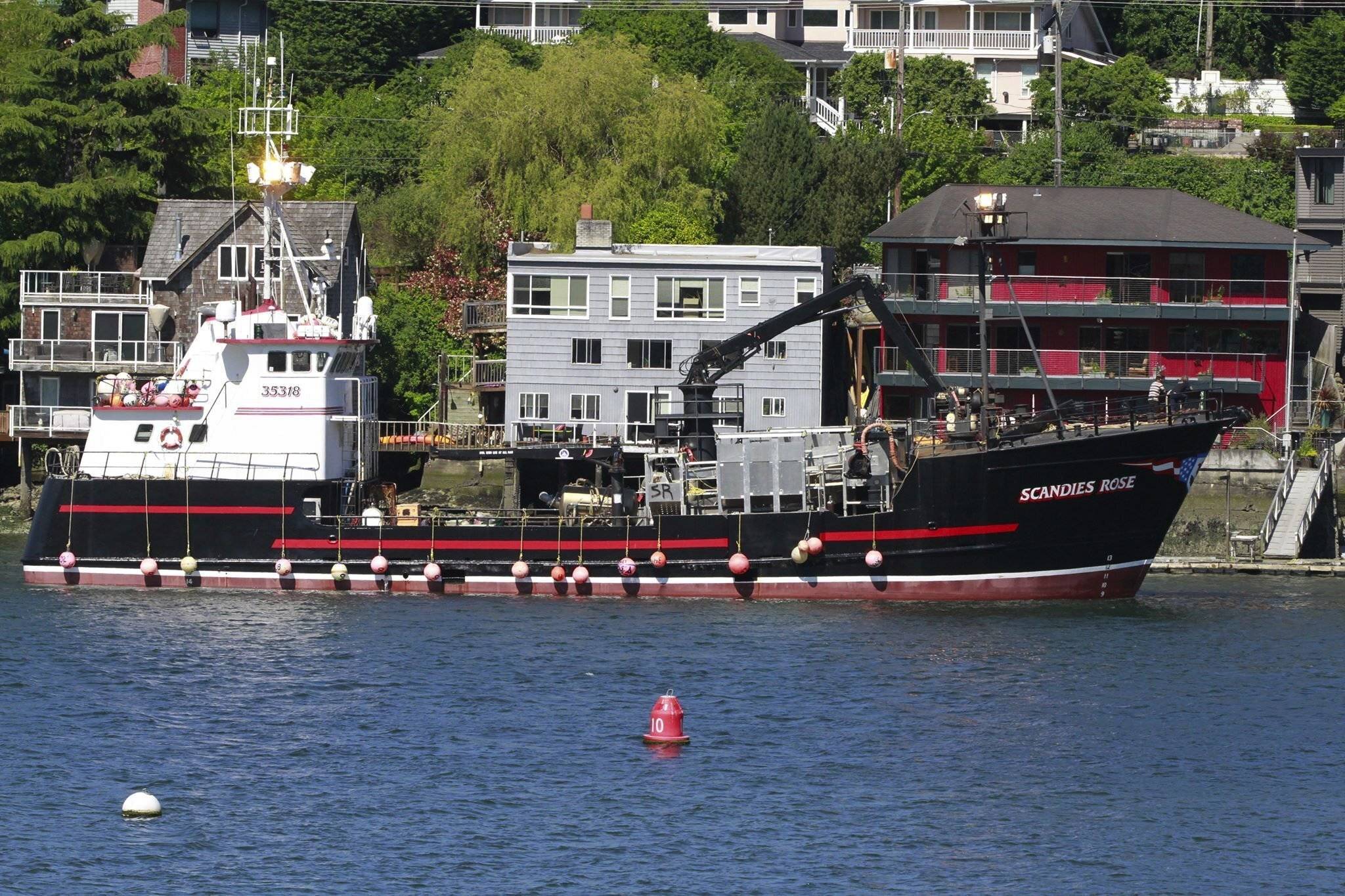A survivor of fatal Alaska crab boat tragedy said the crew went from “sleeping to swimming in about 10 minutes” as rough seas and icing threatened to sink their boat.
“On the 31st we just started listing really hard on the starboard side,” Dean Gribble Jr. said in a YouTube video he said he posted to answer some questions about what happened. “From sleeping to swimming was about 10 minutes. It happened really fast. Everybody was trying to get out. Everybody was doing everything they could and it was just really a (expletive) situation.”
Gribble said they faced 20 foot seas, 40-mph winds and icy conditions.
“I’ve fished for 20 years, I know that you do not make it,” he said. “Everybody can die in those situations and I knew that’s what we were going into. We were in the raft for about five hours.”
Gribble and John Lawler were the only survivors, according to the Coast Guard. Gribble, who’s appeared on the Discovery Channel documentary series “Deadliest Catch,” and Lawler suffered hypothermia but were released from a hospital.
“I just wish the other guys would have made it,” Gribble said in the video, shaking his head and looking down. “I kind of feel bad now that I’m here and they’re not. Send some love to their families.”
Calls to loved ones in the lead-up to the sinking also revealed the rough conditions the seven-man crew faced, including icing that did not seem to rattle the boat’s captain.
Gary Cobban Jr., the captain, was among five fishermen missing and feared dead after the Scandies Rose sank late Tuesday. The Coast Guard did not release details Thursday on a possible cause.
Cobban’s ex-girlfriend, Jeri Lynn Smith, told the Anchorage Daily News he called her in North Carolina about two hours before the boat sank to wish her a happy new year. She said the conditions hadn’t seemed to worry him.
“When I talked to him, he told me the boat was icing and it had a list to it, but he didn’t sound alarmed. He didn’t sound scared,” Smith said. “The boat ices. The boat ices every winter. It’s just something they deal with. I didn’t worry about it.”
Smith said she wouldn’t have hung up if she thought he was in a crisis.
Others listed as missing were David Lee Cobban, Arthur Ganacias, Brock Rainey and Seth Rousseau-Gano, according to the Coast Guard. It said it used helicopters, planes and a boat as part of a search effort that covered 1,400 square miles and ended Wednesday evening.
Ashley Boggs of Peru, Indiana, said Rainey, of Kellogg, Idaho, called her shortly before the ship sank and said conditions were bad. The two had planned to marry after Rainey returned.
“I’m just praying and hoping they find him on land or something,” Boggs told The Associated Press on Thursday.
The boat was carrying a load of crabbing pots for the start of the winter season, Dan Mattsen, a partner in the vessel managed by Seattle-Based Mattsen Management, told the Seattle Times.
Crabbing boats endure perilous conditions in Alaska waters that have been immortalized in “Deadliest Catch.” Workers face dangers like huge waves, harsh weather and massive crab pots that could crush them.
Commercial fishing is one of the country’s most dangerous occupations, according to the National Institute for Occupational Safety and Health. It said there were 179 deaths in Alaska fisheries between 2000 and 2014, the most recent numbers available.
From 2010 to 2014, there were 66 vessel disasters in Alaska waters, including sinkings and fires, that killed 15 people, the agency said. The leading causes of fatal disasters were instability and being hit by large waves. Many of the fatal incidents involved small boats known as skiffs.
Different fisheries have different risks, said Samantha Case, an epidemiologist in the agency’s Commercial Fishing Research Program.
Case said steps have been taken aimed at making the Bering Sea and Aleutian Islands crab fishery safer, including Coast Guard stability checks for vessels; changes in fisheries management that reduced some operational risk, such as a “race to fish” competitiveness; and increased marine safety training.
In a high-profile incident in 2017, six people died in the capsizing and sinking of the vessel Destination in the Bering Sea, which Coast Guard Rear Admiral J.P. Nadeau called a “tragic and preventable accident.” An investigative report found stability, weight issues and excess ice accumulation from freezing spray as contributing factors.
A study Case was a part of looked at survival factors for crew on vessels in Alaska that sank and found use of life rafts and immersion suits increased chances for survival when a boat had to be abandoned. Immersion suits, which provide a bit of flotation and can help keep someone awaiting rescue warm, are critical for people who will be in water for longer periods, Case said.
The 130-foot Scandies Rose was traveling in an area with warnings about strong winds and heavy freezing spray, said Louise Fode, a warning coordination meteorologist with the National Weather Service.
Its last known position was 170 miles southwest of Kodiak Island, and it sank about 10 p.m. Tuesday, the Coast Guard said. The vessel had sent out a mayday call.
Rescue crews battled winds of more than 40 mph, 15- to 20-foot seas and visibility that was limited to a mile, Petty Officer 2nd Class Melissa McKenzie said.
She said the air temperature was about 10 degrees. The estimated water temperature was 43 degrees, the weather service said.
Bill Rose of Seattle, who used to work on fishing boats in Alaska, said the conditions can be brutal — even “terrifying for someone who had never done it. But if it’s all you can do to make a living and you’re out there and you’re used to it, you really don’t think much of it.”
He said on the right boat, a fisherman could make $150,000 a year. “I mean, why wouldn’t you do it?” he said.

